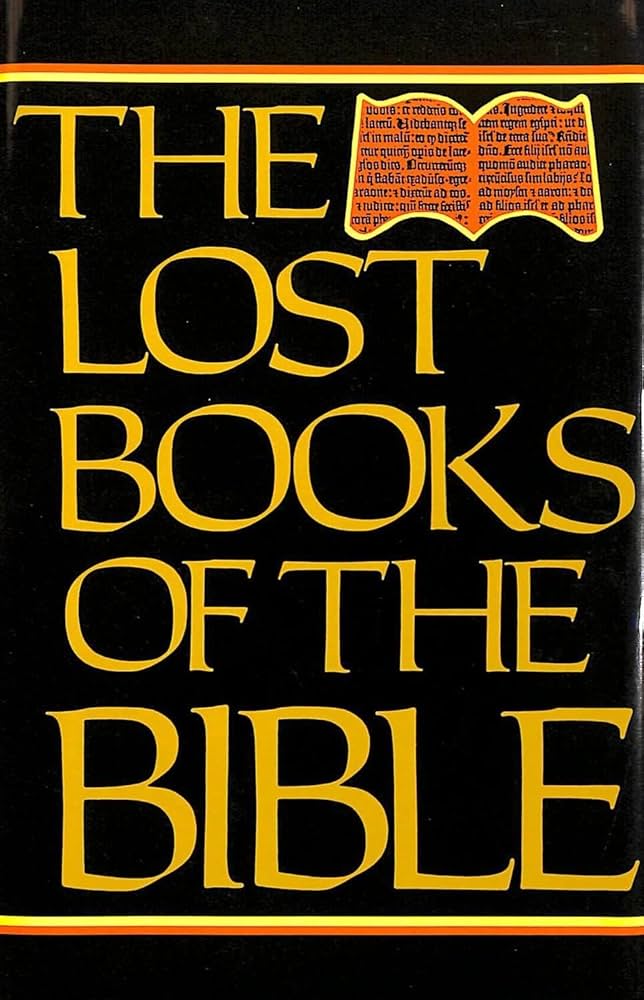The Lost Books of the Bible: Exploring the Apocrypha and Pseudepigrapha

The term “Lost Books of the Bible” evokes a sense of mystery and intrigue, hinting at hidden scriptures and alternative narratives surrounding the life of Jesus and the development of early Christianity. While the canonical Bible contains the books accepted by the church as divinely inspired, a vast body of other writings, collectively known as the Apocrypha and Pseudepigrapha, offers a fascinating glimpse into the broader literary and theological landscape of early Christianity and Judaism. This article will delve into the world of these “lost” books, exploring their content, historical context, and enduring cultural impact. We will examine these texts through the lenses of genre, authorship, educational value, library collections, and their broader cultural influence.
Genres and Content of the Lost Books

The Apocrypha and Pseudepigrapha encompass a diverse range of genres, reflecting the rich literary culture of the period in which they were written. These genres include:
-
Gospels: Unlike the four canonical Gospels (Matthew, Mark, Luke, and John), apocryphal gospels offer alternative accounts of Jesus’s life, birth, and teachings. Examples include the Protoevangelium of James, which details the birth of Mary and the early life of Jesus, and the Gospel of Thomas, known for its collection of sayings attributed to Jesus. These texts often blend historical accounts with legendary elements, reflecting the diverse beliefs and traditions within early Christianity. They provide valuable insights into the development of Christian theology and the challenges faced in establishing a unified canon.
-
Epistles: These are letters, often attributed to biblical figures like Paul, but often of dubious authorship. The Epistle to the Laodiceans, for instance, is a non-canonical letter purportedly written by Paul, but absent from the established biblical canon. The inclusion of such texts in collections like the “Lost Books of the Bible” highlight the wide range of writings circulating in early Christian communities. Analyzing their style and theological content allows scholars to better understand the evolution of Christian thought and practice.
-
Acts and Narratives: Similar to the Book of Acts in the canonical Bible, some apocryphal writings recount the history and activities of early Christians or biblical figures. These narratives often present miraculous events or legendary episodes, reflecting the cultural context in which they were created. The Acts of Paul and Thecla, for example, tells a romantic story featuring Paul and Thecla, a female disciple. These narratives provide valuable information about the social and religious practices of early Christian communities, even if their historical accuracy is debated.
-
Pseudepigrapha: These are writings falsely attributed to biblical figures or historical figures. The term “pseudepigrapha” literally means “false writings.” However, this does not necessarily imply that these texts are entirely fabricated or without value. Many pseudepigrapha offer significant insights into the religious, social, and political ideas of the time they were written. Examples include various books of Enoch, which are rich in apocalyptic and mystical imagery. The value in studying them, even when acknowledging questions of their original attribution, lies in their reflection of religious imagination and the diverse streams of Jewish and Christian thought.
-
Wisdom Literature: This genre is reflected in certain Apocryphal texts that offer ethical, philosophical, and practical advice. The Wisdom of Solomon, for example, is a book of wisdom literature included in some Bibles but not universally considered canonical. These texts often draw on the cultural norms and ideals of their time to express spiritual teachings. They reveal the importance placed on ethical and moral conduct within early religious communities.
Authors and Their Inspirations
Determining the authorship of the “lost” books poses a significant challenge for scholars. Many texts were anonymous, while others were attributed to biblical figures or other influential individuals without concrete historical evidence. This phenomenon of pseudonymous authorship was common in the ancient world and serves as a reminder of the complex social and literary dynamics of the time. The lack of definitive authorial attribution does not, however, diminish the importance of these texts.
-
Anonymities: Many texts were circulated anonymously, making it difficult to trace authorship directly. Their anonymity, however, may reflect the cultural norms of the time or the authors’ desires to focus on the message rather than personal prominence. Their study helps us understand how ideas and beliefs were shared and disseminated within early communities.
-
False Attributions: Attributions to well-known figures, including biblical ones, aimed to lend credibility and authority to the works. The texts would likely garner greater respect or attention from their respective audiences, particularly when attributed to famous figures like Paul or Enoch. Examining these attributions reveals the sophisticated literary strategies employed to convey religious and ideological messages.
-
Inspirations: The “lost” books were shaped by numerous influences, including:
-
Judaic traditions: These texts reveal a clear connection to Jewish traditions and beliefs. The diverse range of Jewish thought and practice is illuminated by these writings, especially in the Pseudepigrapha.
-
Hellenistic philosophy: The influence of Hellenistic thought is also evident in some of the “lost” books, particularly in their philosophical and theological arguments. The interaction between early Christianity and Greek philosophy is apparent in these texts.
-
Contemporary social and political contexts: The social and political world in which the “lost” books were written clearly influenced their content. These texts provide invaluable insights into the cultural settings of early Judaism and Christianity.
-
Educational Value and Life Lessons in the Apocrypha and Pseudepigrapha
While not considered scripture by most mainstream denominations, the Apocrypha and Pseudepigrapha offer significant educational value and provide opportunities for reflection on broader life lessons.
-
Historical Context: They offer invaluable insights into the historical, cultural, and religious worlds of early Judaism and Christianity. Studying these texts helps us better understand the historical development of religious belief and practice, providing a richer context for understanding the canonical Bible.
-
Theological Exploration: They expose a variety of theological perspectives and interpretations that broaden our understanding of early religious thought and debate. The diverse interpretations of scripture and religious experience enrich our understanding of the evolution of faith.
-
Literary Merit: Many of these texts possess considerable literary merit, showcasing the creativity and talent of their authors. Their literary analysis reveals the use of literary techniques and styles prevalent during their period.
-
Life Lessons: While not always directly instructional, many “lost” books explore themes of faith, morality, social justice, and human experience. Reading these texts can stimulate reflection on these universal themes, offering inspiration and guidance in life.
Libraries and Rare Collections
The “lost” books are preserved in various library collections and archives around the world. Many texts have survived in fragments, requiring meticulous scholarship to reconstruct the original writings.
-
Ancient Manuscripts: The discovery of ancient manuscripts, such as the Dead Sea Scrolls, has significantly expanded our knowledge of the Apocrypha and Pseudepigrapha. The scrolls containing various writings provide a firsthand glimpse into the texts themselves.
-
Medieval Manuscripts: Medieval manuscripts preserve various versions and translations of these texts, often with unique illustrations and commentaries. These manuscripts, sometimes found in monastery or university libraries, offer glimpses into how these texts were understood and interpreted across different historical periods.
-
Digital Libraries: The digitization of manuscripts and printed editions has made the “lost” books more accessible to scholars and the public alike. Digital resources provide valuable tools for research and allow broader access to these texts than ever before.
-
Rare Collections: Many libraries and institutions maintain rare book collections that contain early printed editions of the Apocrypha and Pseudepigrapha. These collections offer unique insights into the history of these texts and their early reception.
Cultural Impact and Legacy
The “lost” books have had a profound and lasting cultural impact, influencing literature, art, and religious thought for centuries.
-
Literary Influence: The imagery, themes, and narratives found in these texts have inspired numerous works of literature, including novels, poems, and plays. Their motifs have been incorporated in numerous artistic forms, demonstrating their ongoing relevance.
-
Adaptations: The stories and characters featured in these texts have inspired adaptations in various forms of media, such as films, television series, and video games. These adaptations bring these historical and religious narratives to contemporary audiences.
-
Awards and Recognition: Some scholars and writers who have worked on these texts have received awards and accolades for their contributions to biblical studies and related fields. Their ongoing work promotes the study and understanding of the apocryphal and pseudepigraphal texts.
-
Communities: Communities of scholars, students, and readers actively engage with and discuss the “lost” books, expanding our understanding and appreciation of their significance. These academic discussions contribute to the ongoing scholarly exploration of these texts.
In conclusion, the “Lost Books of the Bible” represent a rich and multifaceted body of writings that offers invaluable insights into early Christianity and Judaism. Their exploration enriches our understanding of the historical and literary context of the Bible, the diversity of early religious thought, and their continuing influence on art, literature, and religious traditions. While not considered scripture by all, their study provides a valuable opportunity for further intellectual and spiritual exploration.